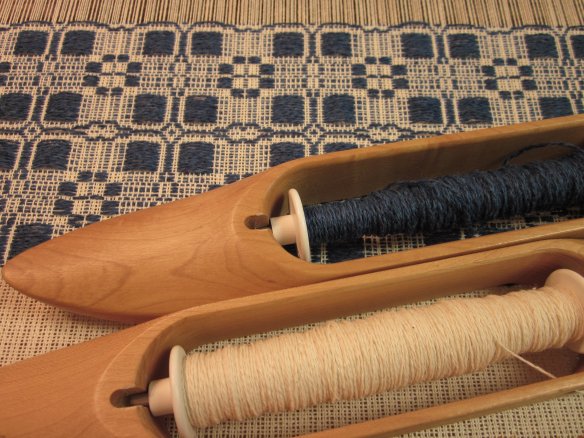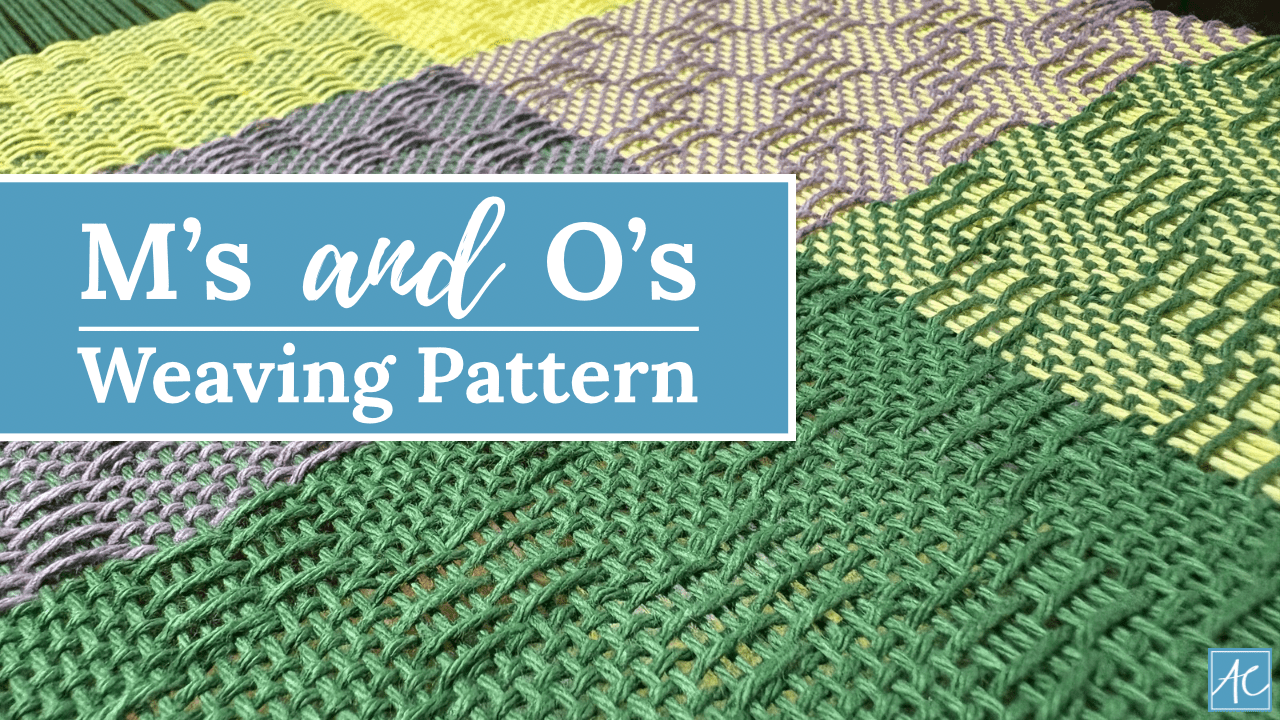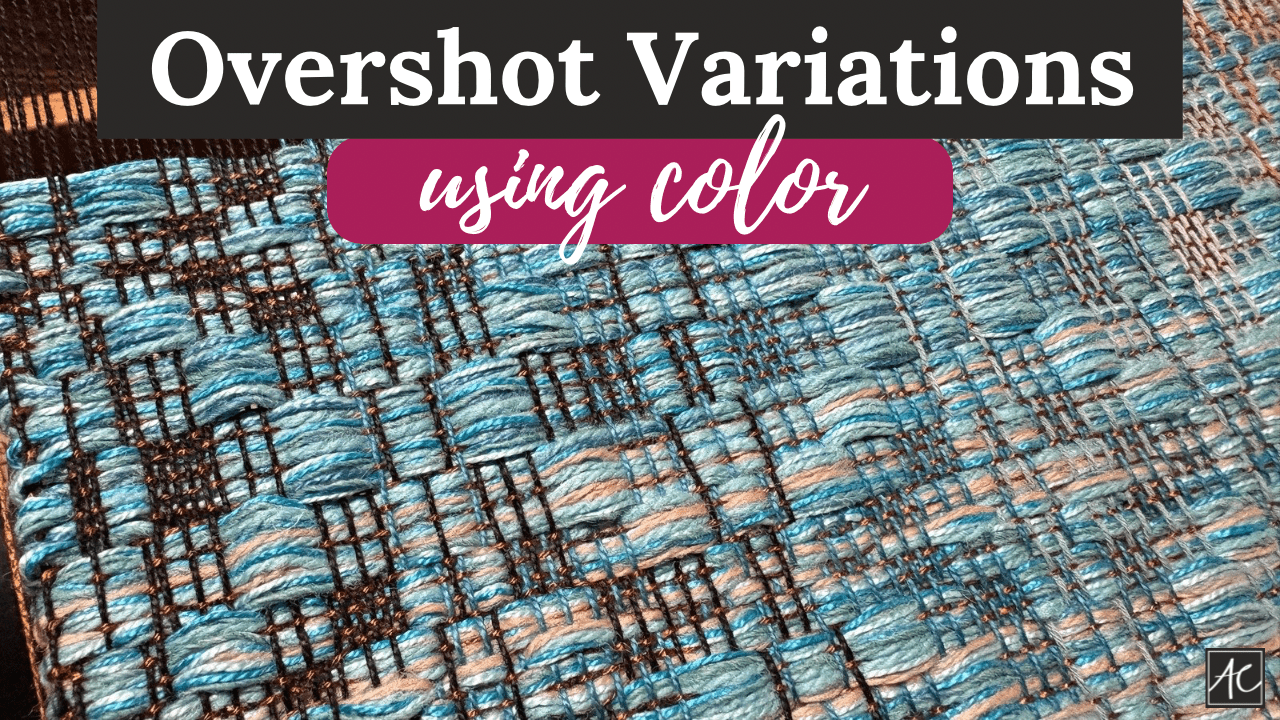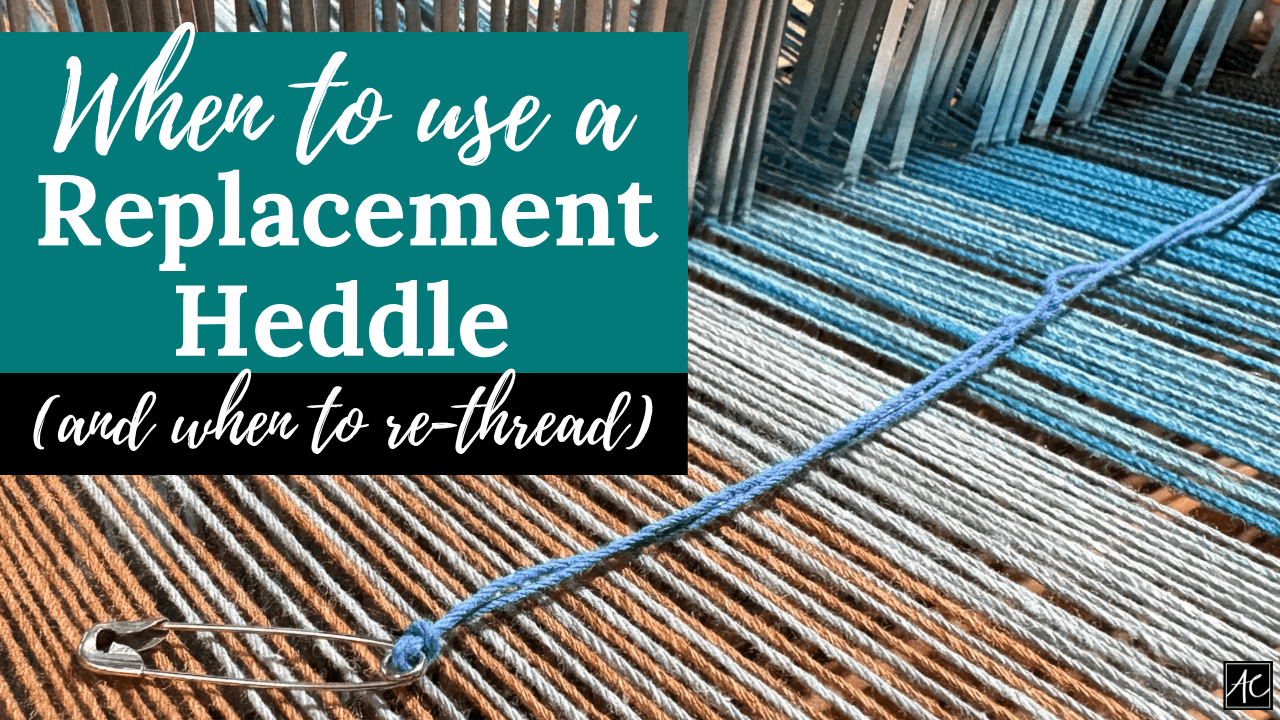(The 80’s influence slips out at the strangest times! You can thank Huey Lewis this time around…) So, I am in the middle of creating woven, overshot squares for a coverlet project! The loom has been set up in a neutral color and I’m weaving (12) different colored squares – (1) for each weaver. When the project’s finished, I’ll have (12) apple green squares all in different patterns! (The apple green is my color!) I wove a handful of squares in the last blog entry and the rest you can see below!
So, one of the keys to weaving an overshot pattern is selecting the right sized yarn. See the 2 shuttles? The one with the pretty color in it contains yarn that is about twice the size of the other yarn. The thicker yarn is meant to fill in the pattern over the background so the pattern shows up better!
The 2 different yarns have very different responsibilities. The neutral colored yarn creates a durable fabric – practical and necessary, but not very exciting. The glamorous colored yarn creates the pattern – yummy and beautiful, but the fabric will fall apart on it’s own. They both need each other to create an enticing and stable piece of cloth – sort of a ying and yang relationship!
Whenever I run out of yarn in the shuttle, I overlap the old end and the new end in the fabric and just keep weaving. The close weave will lock everything in place. Weavers use knots quite often, but never in the fabric – too bulky!
I took an Overshot class at the John C. Campbell Folk School in North Carolina. We learned all sorts of amazing things about this particular style of weaving, as well as other things you can do with an Overshot pattern. One of the things that really struck me was the history of it. Imagine a time when you had to shear the sheep, wash the wool, card the wool, spin the wool (in 2 different sizes, mind you!), dye the wool and then go through all the steps to weave it! And once it was woven, you would still have to hand sew it! I get exhausted just thinking about it!
This particular pattern has a reversible quality to it – bonus! You can see in the photo below that the blue is prominent on one side and isn’t on the other. It’s magic, truly!
Next up, I’ll take this off the loom and you can see all the colors together! See you soon…














